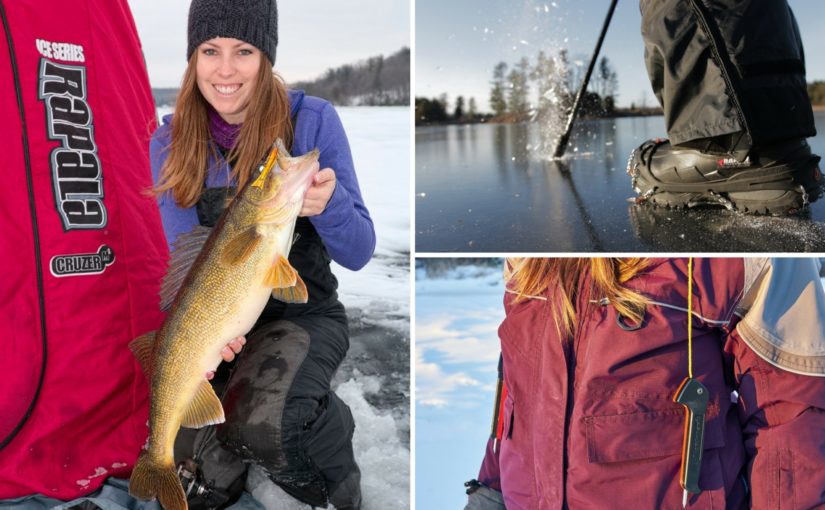Today’s post comes from year-round multispecies angler and writer Ashley Rae of SheLovesToFish.com.
As the ice freezes up across the province, anglers will soon begin venturing out onto the hard water for some ice fishing action.
Ice fishing is a great way to enjoy the great outdoors during our long, cold winters. Trust me, when you’re outside hooking fish, winter passes by in a flash!
Thankfully with the wide range of equipment available today, ice fishing doesn’t have to be a chilling experience. In order to enjoy a safe and comfortable season from start to finish, make sure you are prepared by checking out the list below.
Ice chisel
An ice chisel, or spud bar, is the most important item to bring along when venturing out onto the ice.
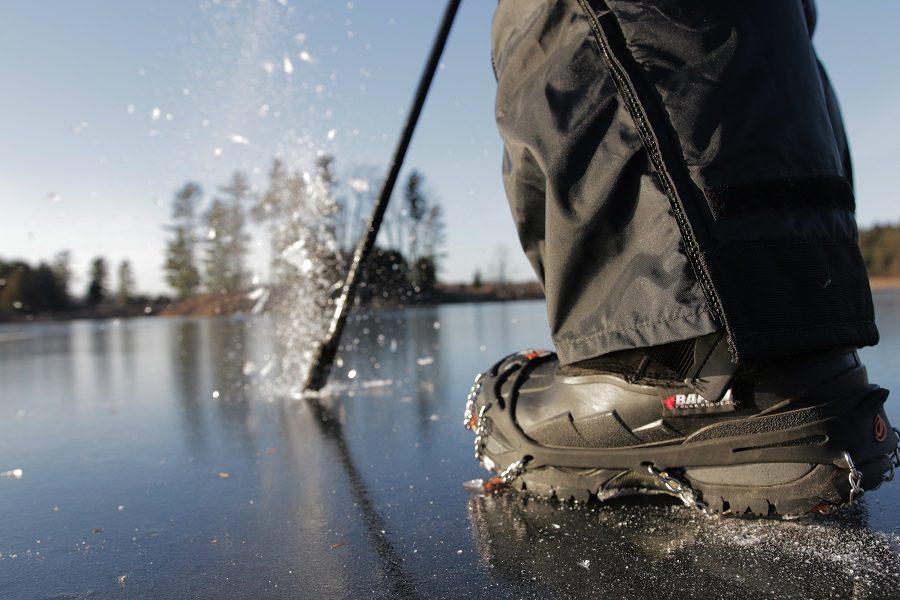
This long, heavy bar is used to check the ice a couple steps ahead. Anglers use the sharp edge to strike the ice, and check for cracks. Checking the ice a pace ahead determines unsafe thickness before stepping on it.
Ice thickness varies everywhere, even within the same body of water. Natural springs, current, and snow cover can affect the quality of ice. Always use caution when venturing onto a body of water at any point during the season.
Cleats
When there’s little to no snow cover, cleats provide great traction while walking on slippery ice.
Not only are they useful for walking, but they’ll also provide traction while drilling holes with an auger (or running over to help your friend land a fish)!
Ice picks
Ice picks should always be worn while out on the hard water.
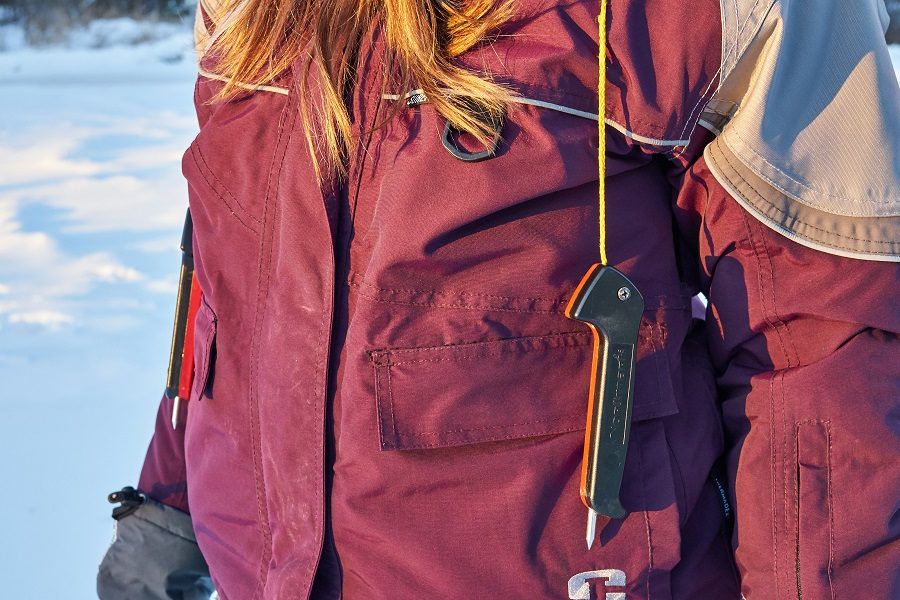
Often attached by a string, ice picks are worn around the neck resting on the front of the body. In the event of falling through the ice, they’re easily accessible. The sharp spikes on each end help you pull yourself out of the water.
Flotation suit
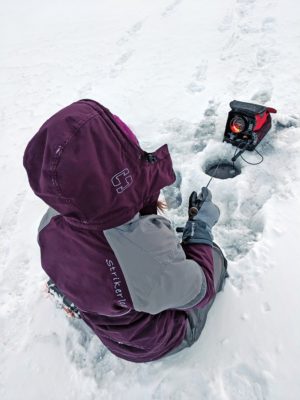
Flotation suits can make the difference between life and death.
Like a full-bodied life jacket, they’re designed to keep you afloat in the event you end up in the water.
Nowadays, floater suits come in a variety of colours and styles, and are very warm and stylish.
Companies like Mustang Survival and Striker Ice provide a variety of flotation suit options. Striker Ice also makes suits specifically for female anglers.
A friend and a plan
You never know what can happen when you’re on the ice.
It’s always best to be accompanied by a friend or family member while out exploring the hard water. Always be sure to let someone know where you’re headed, and when you expect to return.
Speaking of planning, make sure part of your prep work includes checking the Fishing Regulations!
Dress warm
Layers, layers, layers!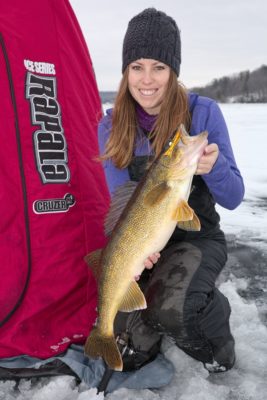
Ice fishing is often thought to be a cold sport. I’m not one for the cold, but by wearing proper layers, I rarely find myself feeling chilled at all.
I start off with a merino wool, or polypropylene base layer to manage moisture. Next up is an insulator layer, followed by a soft shell for weather protection.
My flotation suit is the final layer. I wear a two-piece enabling me to take the jacket off if I’m too warm. Wearing multiple layers allows for removing articles of clothing while travelling, and then layering back up when stationary.
Don’t forget waterproof boots, gloves, and a fully-lined fleece toque to keep the heat in.
Fish in comfort
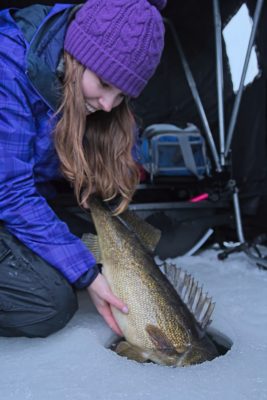
Comfort when ice fishing is defined differently for us all.
Over the years, I’ve added equipment such as a shelter, portable heater, and chair.
Sometimes I leave all of it at home and just bring along my rods, tackle and flasher (ice fishing sonar).
I can travel light on the warmer days, and set up camp and fire up the heater on the colder days.
No matter what species you’re after this winter, have a safe and successful ice fishing season!
